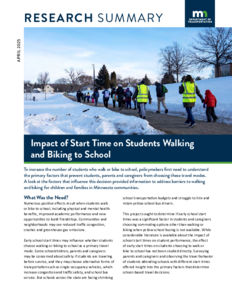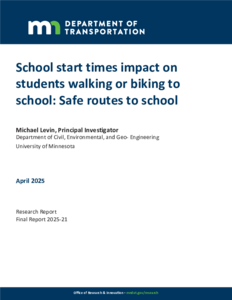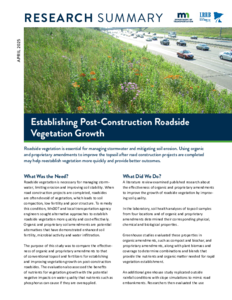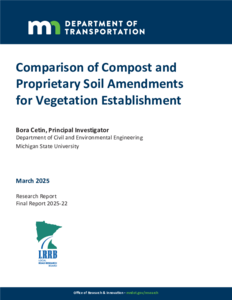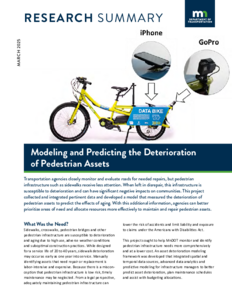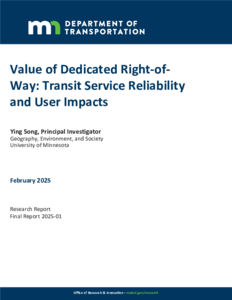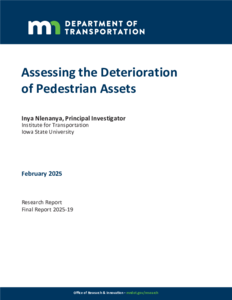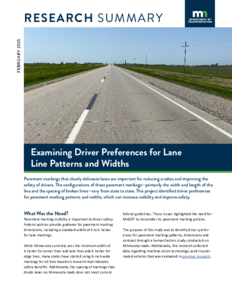series within Research Reports collection
School start times impact on students walking or biking to school: Safe routes to school
Date Created
2025-04
Report Number
2025-21
Description
Comparison of Compost and Proprietary Soil Amendments for Vegetation Establishment
Creator
Date Created
2025-03
Report Number
2025-22
Description
Value of Dedicated Right-of-Way: Transit Service Reliability and User Impacts
Date Created
2025-02
Report Number
2025-01
Description
Assessing the Deterioration of Pedestrian Assets
Creator
Date Created
2025-02
Report Number
2025-19
Description

